 W
WWild West shows were traveling vaudeville performances in the United States and Europe that existed around 1870–1920. The shows began as theatrical stage productions and evolved into open-air shows that depicted romanticized stereotypes of cowboys, Plains Indians, army scouts, outlaws, and wild animals that existed in the American West. While some of the storylines and characters were based on true events, others were fictional or sensationalized. Native Americans in particular were portrayed in a sensationalistic and exploitative manner. The shows introduced many western performers and personalities, and romanticized the American frontier, to a wide audience.
 W
WThe following is a list of Wild West shows:Allen Bros. Wild West (1929–1934) – Charles and Mert H. Allen Arlington & Beckman's Oklahoma Ranch Wild West (1913) – Edward Arlington and Fred Beckman A. S. Lewis Big Shows (1910) Austin Bros. 3 Ring Circus and Real Wild West (1945) Barrett Shows and Oklahoma Bill's Wild West (1920) Bee Ho Gray's Wild West Booger Red's Wild West Show (1904–1910) Broncho John, Famous Western Horseman and his Corps of Expert Horsemen (1906) – J. H. Sullivan Buckskin Ben's Wild West and Dog and Pony Show (1908) Benjamin Stalker Buckskin Bill's Wild West (1900) Bud Atkinson's Circus and Wild West – Toured Australia in 1912 Buffalo Bill's Wild West and Congress of Rough Riders California Frank's All-Star Wild West (1911) – Frank Hafley Captain Jack King's Wild West show Colonel Cummins' Wild West Indian Congress and Rough Riders of the World – Frederick T. Cummins Congress of Rough Riders and Ropers|Zach Mulhall's Congress of Rough Riders and Ropers Diamond Dick's Congress of World's Western Champions Drumhellers Wild West Productions Fred Akins Real Wild West and Far East Show (1909–1910) Gene Autry's Flying A Ranch Stampede (1942) Hardwick's "Great Rocky Mountain Wild West Show" (1884) Irwin & Hirsig Wild West (1910) Irwin Brothers Cheyenne Frontier Days Wild West Show (1913–1917) Jack King's Wild West Rodeo Jones Bros.' Buffalo Ranch Wild West (1910) L. O. Hillman's Wild West Aggregation]] (1900–1920) Miller Bros. 101 Ranch Real Wild West Pate Boone Wild West Show Pawnee Bill's Wild West Show Poe's Wild West Show (1913–1915) Texas Jack's Wild West (1901–1905) Texas Jay Davis & Sons Wild West Rodeo Western Town at Fantasy Island (1961–2019) Young Buffalo Wild West Annie Oakley and Chief Red Shirt
 W
WThe American Exhibition was a world's fair held at Earls Court in West Brompton, London, in 1887 in the year of Queen Victoria's golden jubilee.
 W
WWilliam Bankier billed as 'Apollo, the Scottish Hercules', was a strongman stage performer who in 1915 and 1919 was also 'King Rat' of the showbusiness charity the Grand Order of Water Rats.
 W
WCaptain Adam Henry Bogardus (1834–1913) was a world champion and United States champion trap shooter, as well as the inventor of the first practical glass ball trap.
 W
WJoseph Lee Bowman was an American marksman called "The Straight Shooter", considered to have been a guardian of Texas and Western frontier culture. He was also an Eagle Scout, Army soldier, and bootmaker.
 W
WJohn M. Burke, also known as "Arizona John" and "Major John M. Burke" was an American publicist, manager, and press agent. He is best known for his association with Buffalo Bill's Wild West show.
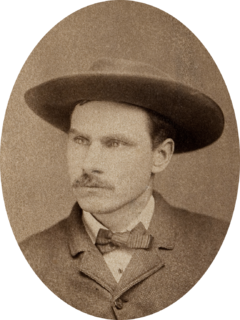 W
WFrancis E. Butler was an Irish American marksman who performed in Wild West variety shows. He developed a shooting act with his performing partner John Graham, and when Graham fell ill the sharpshooter Annie Oakley stood in for him. Butler and Oakley began to perform together and later married, and they joined the Sells Brothers Circus. They gained notoriety as a sharpshooting duo during their time in Buffalo Bill's Wild West Show from 1885 to 1901. Butler also worked as a representative and salesman for gun manufacturers.
 W
WWilliam Frank "Doc" Carver was a late 19th-century sharpshooter and the creator of a popular diving horse attraction.
 W
WSamuel Franklin Cowdery was a Wild West showman and early pioneer of manned flight. He is most famous for his work on the large kites known as Cody War-Kites, that were used by the British before World War I as a smaller alternative to balloons for artillery spotting. He was also the first man to fly an aeroplane built in Britain, on 16 October 1908. A flamboyant showman, he was often confused with Buffalo Bill Cody, whose surname he took when young.
 W
WRay "Crash" Corrigan was an American actor most famous for appearing in many B-Western movies. He also was a stuntman and frequently acted as silver screen gorillas using his own gorilla costumes.
 W
WGabriel Dumont (1837–1906) was a Canadian political figure best known for being a prominent leader of the Métis people. Dumont was well known for his movements within the North-West Rebellion at the battles of Batoche, Fish Creek, and Duck Lake as well as for his role in the signing of treaties with the Blackfoot tribe, the traditional main enemy of the Métis.
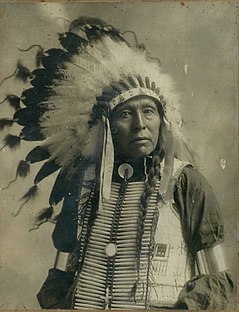 W
WFlying Hawk was an Oglala Lakota warrior, historian, educator and philosopher. Flying Hawk's life chronicles the history of the Oglala Lakota people through the 19th and early 20th centuries, as he fought to deflect the worst effects of white rule; educate his people and preserve sacred Oglala Lakota land and heritage. Chief Flying Hawk was a combatant in Red Cloud's War and in nearly all of the fights with the U.S. Army during the Great Sioux War of 1876. He fought alongside his first cousin Crazy Horse and his brothers Kicking Bear and Black Fox II in the Battle of the Little Big Horn in 1876, and was present at the death of Crazy Horse in 1877 and the Wounded Knee Massacre of 1890. Chief Flying Hawk was one of the five warrior cousins who sacrificed blood and flesh for Crazy Horse at the Last Sun Dance of 1877. Chief Flying Hawk was the author of his commentaries and accounts of the Battle of the Little Big Horn, Crazy Horse and the Wounded Knee Massacre, and of Native American warriors and statesmen from who fought to protect their families, defend the invasion of their lands and preserve their culture. Chief Flying Hawk was probably the longest standing Wild Wester, traveling for over 30 years throughout the United States and Europe from about 1898 to about 1930. Chief Flying Hawk was an educator and believed public education was essential to preserve Lakota culture. He frequently visited public schools for presentations. Chief Flying Hawk leaves a legacy of Native American philosophy and his winter count covers nearly 150 years of Lakota history.
 W
WGeorgian horsemen were notable participants of the Wild West shows in the 1890s. Billed as Russian Cossacks, the riders from Georgia featured in circuses and shows well into the first half of the 20th century. Their performances, featuring trick riding and folk dance, were extremely popular and exerted significant influence on cowboys in the United States.
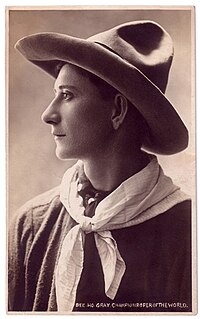 W
WBee Ho Gray was a Western performer who spent 50 years displaying his skills in Wild West shows, vaudeville, circus, silent films, and radio. While he was primarily known as an expert at trick roping, he was also skilled with knife throwing, bullwhips, trick riding, and the banjo. He wove all of these skills together in a homely comic routine. Throughout his long career, he was constantly compared to Will Rogers, which was befitting, considering the two performers worked together several times and developed their acts together in the early 1900s.
 W
WFrank T. Hopkins was an American professional horseman who at one time performed with the Ringling Brothers Circus. He was a legendary long-distance rider, who won 400 races, and was recognized by his contemporaries as supporting the preservation of the mustang.
 W
WTexas Jack Jr.,, who adopted the name of his rescuer Texas Jack Omohundro, is best known for running a Wild West show and circus where he gave Will Rogers his start as an entertainer.
 W
WMartha Jane Cannary, better known as Calamity Jane, was an American frontierswoman. In addition to many exploits she was known for being an acquaintance of Wild Bill Hickok. Late in her life, she appeared in Buffalo Bill's Wild West show and at the 1901 Pan-American Exposition. She is said to have exhibited compassion to others, especially to the sick and needy. This facet of her character contrasted with her daredevil ways and helped to make her a noted frontier figure. She was also known for her habit of wearing men's attire.
 W
WMary Emma "May" Manning Lillie was an American sharpshooter and equestrian.
 W
WKenneth Olin "Ken" Maynard was an American actor and producer. He was mostly active from the 1920s to the 1940s and considered one of the biggest Western stars in Hollywood.
 W
WDonald McKay was an American scout, actor, and spokesman. He is best known as the leader of the Warm Springs Indians during the Modoc War and American Indian Wars.
 W
WThe Miller Brothers 101 Ranch was a 110,000-acre (45,000 ha) cattle ranch in the Indian Territory of Oklahoma before statehood. Located near modern-day Ponca City, it was founded by Colonel George Washington Miller, a veteran of the Confederate Army, in 1893. The 101 Ranch was the birthplace of the 101 Ranch Wild West Show and one of the early focal points of the oil rush in northeastern Oklahoma. It was the largest diversified farm and ranch in America at the time. Bill Pickett's grave and the White Eagle Monument are located on the ranch grounds. The location of the former working cattle ranch was subdivided and all of its buildings destroyed. An 82-acre (33 ha) area of the ranch is a National Historic Landmark. In 2003, the ranch was inducted into the Texas Trail of Fame.
 W
WThomas Edwin Mix was an American film actor and the star of many early Western movies between 1909 and 1935. Mix appeared in 291 films, all but nine of which were silent movies. He was Hollywood's first Western star and helped define the genre as it emerged in the early days of the cinema.
 W
WLucille Mulhall was a well-known cowgirl and Wild West performer.
 W
WAnnie Oakley was an American sharpshooter who starred in Buffalo Bill's Wild West show.
 W
WJohn Baker Omohundro, also known as "Texas Jack", was an American frontier scout, actor, and cowboy. Born in rural Virginia, he served in the Confederacy during the American Civil War and, later, as a civilian scout for the US Army during the Indian Wars. Before his untimely death, Texas Jack became a legendary figure in the American Old West as a Western showman performing dramas on the stage throughout the country, and was immortalized in dime novels published around the world.
 W
WGordon William Lillie, known professionally as Pawnee Bill, was an American showman and performer who specialized in Wild West shows and was known for his short partnership with William "Buffalo" Bill Cody. In 2010, he was inducted into the Hall of Great Westerners of the National Cowboy & Western Heritage Museum.
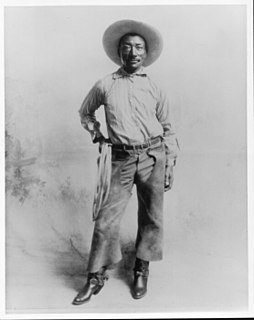 W
WWillie M. "Bill" Pickett was a cowboy, rodeo, Wild West show performer and actor. In 1989, Pickett was inducted into the ProRodeo Hall of Fame.
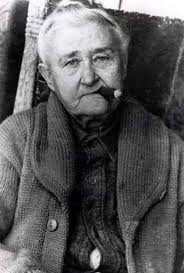 W
WAlice Ivers Duffield Tubbs Huckert, better known as Poker Alice, Poker Alice Ivers or Poker Alice Tubbs, was an English poker player in the American West.
 W
WWilliam Penn Adair Rogers was an American stage and film actor, vaudeville performer, cowboy, humorist, newspaper columnist, and social commentator from Oklahoma. He was a Cherokee citizen born in the Cherokee Nation, Indian Territory.
 W
WRed Shirt was an Oglala Lakota chief, warrior and statesman. Red Shirt is notable in American history as a U.S. Army Native Scout and a progressive Oglala Lakota leader who promoted friendly associations with whites and education for his people. Red Shirt opposed Crazy Horse during the Great Sioux War of 1876-1877 and the Ghost Dance Movement of 1890, and was a Lakota delegate to Washington in 1880. Red Shirt was one of the first Wild Westers with Buffalo Bill's Wild West and a supporter of the Carlisle Native Industrial School. Red Shirt became an international celebrity Wild Westing with Buffalo Bill's Wild West and his 1887 appearance in England captured the attention of Europeans and presented a progressive image of Native Americans.
 W
WShow Indians, or Wild West Show Indians, is a term for Native American performers hired by Wild West shows, most notably in Buffalo Bill's Wild West and Congress of Rough Riders. "Show Indians" were primarily Oglala Lakota from the Pine Ridge Indian Reservation, South Dakota. Performers took part in reenacting historic battles, demonstrating equestrianism and performing dances for audiences. Many veterans from the Great Plains Wars participated in Wild West shows, during a time when the Office of Indian Affairs was intent on promoting Native assimilation. Many went on to act in silent films.
 W
WSitting Bull was a Hunkpapa Lakota leader who led his people during years of resistance against United States government policies. He was killed by Indian agency police on the Standing Rock Indian Reservation during an attempt to arrest him, at a time when authorities feared that he would join the Ghost Dance movement.
 W
WLillian Frances Smith was a young trick shooter and trick rider who joined Buffalo Bill's Wild West Show in 1886, at the age of fifteen. She was billed as "the champion California huntress," and was a direct rival to Annie Oakley in the show.
 W
WFannie Sperry Steele, born Fannie Sperry, was an American bronc rider and rodeo performer from Montana. She was one of the first women inducted into the Rodeo Hall of Fame of the National Cowboy and Western Heritage Museum in 1975, and the first Montana native in the National Cowgirl Hall of Fame in 1978.
 W
WWild Westing was the term used by Native Americans for their performing with Buffalo Bill's Wild West and similar shows. Between 1887 and World War I, over 1,000 Native Americans went "Wild Westing." Most were Oglala Lakota from their reservation in Pine Ridge, South Dakota, the first Lakota people to perform in these shows. During a time when the Bureau of Indian Affairs was intent on promoting Native assimilation, William Frederick Cody used his influence with U.S. government officials to secure Native American performers for his Wild West. Cody treated Native American employees as equals with white cowboys.